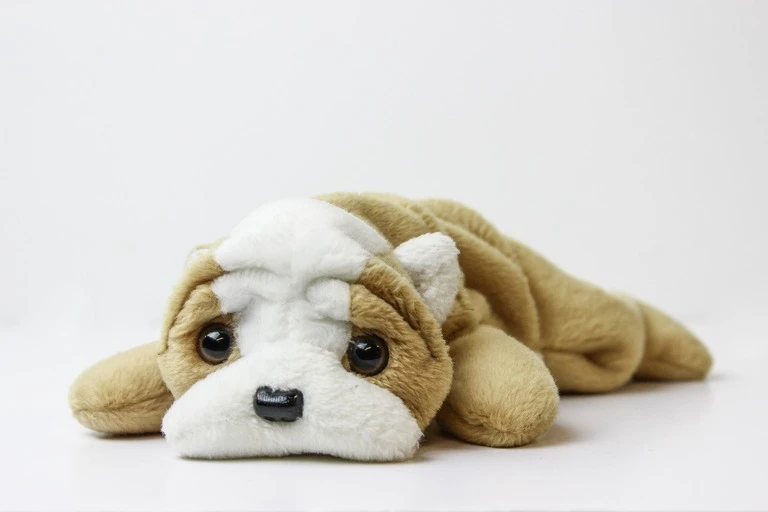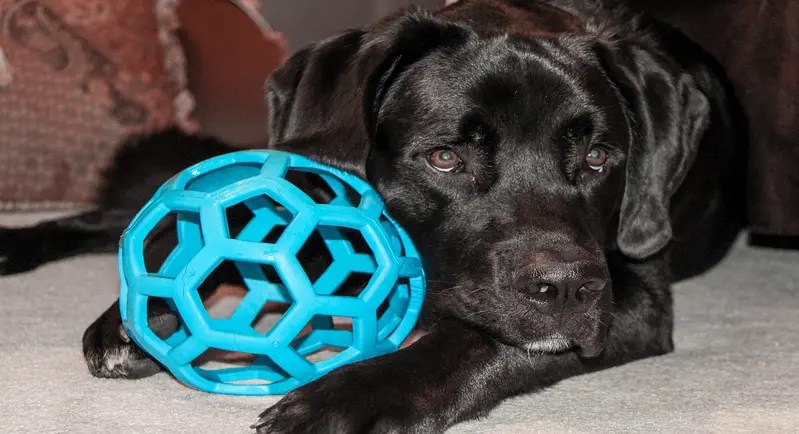Table of Contents
Dog toys come in various forms and serve multiple purposes, including mental stimulation, physical exercise, dental health, and simply providing fun and entertainment for our canine friends. We can discuss different types of dog toys, such as chew toys, interactive toys, plush toys, and puzzle toys, each designed to cater to different aspects of a dog’s needs and behaviors.
Plush Dog Toys
Plush toys for dogs are a popular choice among pet owners, offering both comfort and entertainment for dogs. Here are some key aspects of plush toys for dogs:
- Comfort and Companionship. Plush toys often serve as a source of comfort for dogs. They can be particularly beneficial for puppies and younger dogs who enjoy the softness and may use these toys as a comfort object.
- Materials and Durability: These toys are usually made from soft fabrics like fleece or plush. However, durability is a concern, as dogs with strong jaws or a tendency to chew might quickly destroy them. Some plush toys are designed with extra layers of fabric or reinforced stitching to increase their lifespan.
- Safety Considerations: It’s important to choose plush toys that are safe for dogs. This means avoiding toys with small, detachable parts like buttons or beads that can be choking hazards. Also, owners should regularly check the toys for signs of wear and tear, removing any damaged toys to prevent the dog from ingesting stuffing or fabric pieces.
- Variety and Features: Many plush toys come with additional features like squeakers, crinkles, or varying textures to keep dogs engaged. Some are designed to look like animals or cartoon characters, which can be appealing to both pets and their owners.
- Interactive Play and Training: While plush toys are often used for cuddling and comfort, they can also be incorporated into playtime and training. For example, they can be used in fetch games or hide-and-seek activities to provide mental stimulation and exercise.
- Cleanliness and Maintenance: Plush toys can get dirty and harbor bacteria, so it’s important to choose ones that are machine washable for easy cleaning.

Professional veterinarians and associations offer several recommendations regarding plush toys for dogs. These toys are made from fine, pet-friendly plush fabric and are often durably stitched. They provide a sense of safety and comfort to dogs, and can become a dog’s best friend. Some popular brands producing plush dog toys include Duckworth, Chuckit, SmartPetLove, Tuffs, West Paw, Zippy Paws, and Outward Hound1.
The American Kennel Club suggests that dogs who like to cuddle and carry things in their mouth will enjoy soft, squishy toys made of fleece or plush, especially if they have a squeaker. Such toys can become a special bond for the dog, akin to how a child bonds with a favorite toy.
The Humane Society of the United States also provides guidance on choosing the right plush toys. They suggest selecting a toy that’s small enough for the dog to carry if they view it as a companion. For dogs that like to shake or “kill” their toys, it’s important to choose one that’s large enough to prevent accidental swallowing and sturdy enough to withstand the dog’s attacks. Additionally, items with personal scents like old t-shirts or towels can be comforting to dogs, though they might be destroyed by the dog’s playful behavior.
Dog Chew Toys

Chew toys for dogs play a crucial role in a pet’s life, offering numerous benefits and serving various purposes.
Dental Health
Chew toys can help maintain dental hygiene in dogs. They assist in cleaning teeth, reducing plaque and tartar build-up, and can help freshen a dog’s breath. Some chew toys are specifically designed with dental health in mind, featuring nubs or ridges that massage gums and clean teeth as the dog chews.
Satisfying Natural Instincts
Chewing is a natural behavior for dogs. It helps them explore their environment and can be a form of self-soothing. Providing appropriate chew toys can satisfy these natural urges in a safe and controlled manner, preventing dogs from chewing on inappropriate items like furniture or shoes.
Mental Stimulation
Chew toys can provide mental stimulation and keep dogs engaged for extended periods. This is particularly important for dogs that spend a lot of time alone, as it can help prevent boredom and related behavioral issues.
Types of Chew Toys
There are various types of chew toys available, including rubber toys, nylon bones, rawhide chews, and edible treats. Each type has its advantages and considerations. For instance, rubber toys are durable and good for aggressive chewers, while edible treats provide additional nutrition but may not last as long.
Safety Considerations
When choosing a chew toy, it’s important to consider the dog’s size, chewing habits, and the toy’s material. Toys that are too small can be a choking hazard, while some materials may not be durable enough for aggressive chewers and can break into pieces, posing a risk of ingestion.
Interactive Chew Toys
Some chew toys are designed to be filled with treats or peanut butter, adding an extra layer of engagement. These toys can provide both a mental and physical challenge, as dogs work to retrieve the treats.
Age and Size Appropriateness
Puppies, adult dogs, and senior dogs have different chewing needs and capabilities. Puppies benefit from softer chew toys that help relieve teething discomfort, while older dogs may need gentler materials to protect their teeth and gums.
Regular Inspection and Replacement
It’s important to regularly inspect chew toys for signs of wear and tear. Frayed or torn toys should be replaced to prevent the dog from ingesting pieces that could lead to intestinal blockages or other health issues.
Training and Behavior Modification
Chew toys can also be used as training tools. For example, they can be used in crate training to provide a positive association with the crate or as rewards in behavioral training.
Interactive and Puzzle Dog Toys
Interactive and puzzle toys for dogs are designed to provide mental stimulation, challenge, and entertainment. These toys are particularly beneficial for keeping dogs engaged and mentally active. They can help alleviate boredom and destructive behaviors while also providing a fun and rewarding experience for both the dog and the owner.
Mental Stimulation
Interactive and puzzle toys are excellent for keeping a dog’s mind sharp. They require dogs to think, solve problems, and engage in activities that are mentally stimulating. This can help prevent boredom and reduce the likelihood of destructive behaviors.
Types of Interactive Dog Toys

These can include toys that dispense treats as the dog interacts with them, such as treat balls or toys that need to be nudged or rolled in a certain way to release the treats. Other types include toys that make sounds or have parts that move in response to the dog’s touch.
Training and Bonding
Interactive play can strengthen the bond between a dog and its owner. These toys can be used as part of training exercises or as a reward system.
Physical and Mental Exercise
While they mainly provide mental exercise, many interactive toys also encourage physical activity. Dogs may need to push, pull, or chase the toy to interact with it, providing a combination of mental and physical exercise.
Slow Feeding
Some interactive toys are designed to slow down eating, which is beneficial for dogs that eat their food too quickly. This not only improves digestion but also prolongs the enjoyment of mealtime.
Puzzle Toys
Puzzle toys often require dogs to use their paws or snout to move parts, open compartments, or solve a puzzle to access treats. These toys vary in complexity, from simple ones with a few sliding parts to more intricate puzzles with multiple steps.
Reducing Anxiety and Stress
Engaging with these toys can be a calming activity for anxious dogs. The focus required to solve the puzzles can help take their mind off stressors and provide a sense of accomplishment.
Suitability for Different Ages and Breeds
The choice of toy should be appropriate for the dog’s age, breed, and size. Puppies may need simpler puzzles, while older or more intelligent breeds might require more challenging ones.
Variety and Rotation
To keep dogs interested, it’s a good idea to have a variety of interactive and puzzle toys and rotate them regularly. This prevents the dog from getting bored with the same toy and keeps the challenge fresh and exciting.
Hopefully this helps you in finding the right type of dog toys for your best friend. See what works best, and create ever lasting happiness!
References

At CSJAcupuncture.com, we’re dedicated to empowering you with knowledge that promotes holistic well-being. Explore our educational resources based on clinical experience, science, and best integrative medicine practices. Embark on a journey toward a healthier, balanced life! Check out our wellness book on Amazon.com!